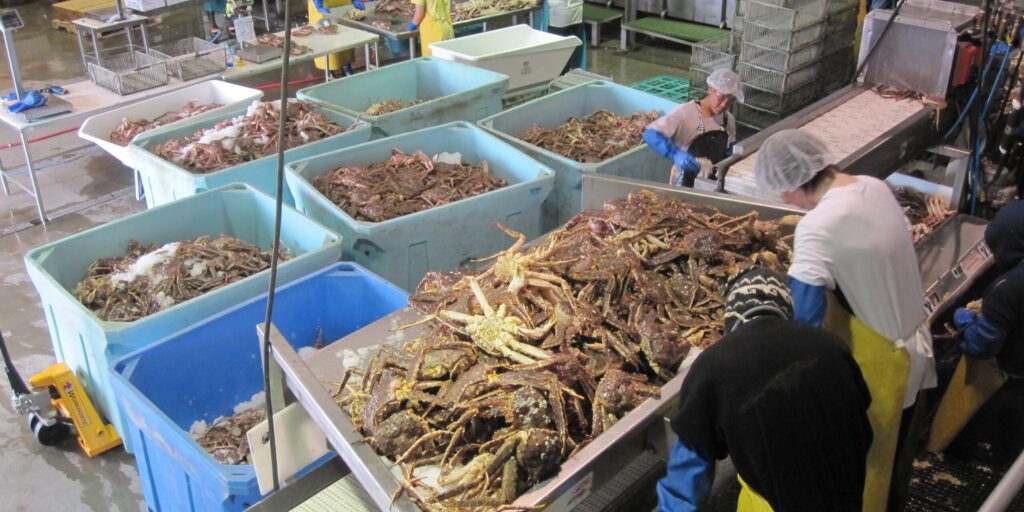According to a recently released recap from the Department of Fish & Game, crabbing in the Norton Sound this year was underwhelming in many ways. At the beginning of 2019, ADF&G set the region’s lowest guideline harvest level in 20 years, poor ice conditions and early sea ice loss prevented many from crabbing in the winter, and when all was said and done at the end of the summer, only about half of the quota was met.
KNOM’s Davis Hovey reports:
“Ugh…it was definitely a year to forget, just poor on both ends. We had problems with the winter fishery, we only got about a quarter of what was available”
Jim Menard, the area manager for Fish & Game, has worked through almost 20 years of crabbing in Nome and the Norton Sound. In that time, he says he’s never seen a harvest of less than 200,000 pounds of crab.
“Usually we got about 300,000 (pounds), I mean the lowest we ever harvested in this stretch in the 2000s was about 240,000 (pounds) back in 2002”
This year’s total guideline harvest level (GHL) set by the Department of Fish & Game was 150,600 lbs. By the end of the summer crabbing season on September 3rd, fishers had caught slightly more than 78,000 pounds, the grand total for the 2019 winter and summer seasons. According to ADF&G, Norton Sound Seafood Products stopped purchasing crab on August 25th.
There are many possible reasons why crab harvest was so low in Norton Sound this year, such as early sea-ice retreat during winter crabbing and more warm-water predator fish present in the region during the summer season. Although an exact explanation hasn’t been determined, Menard says the crab appear to be moving away from their usual habitats in the Norton Sound.
“As far as what happened this year, you know did they move farther offshore, did they get a much bigger head start and were scattered with the ice breaking up so early and the fresh water coming out? Did they start marching out farther into the deep so we couldn’t get them? That’s one theory we have talked with the fishermen about. Is it that they were just far out and scattered everywhere, they never congregated like they usually do?”
Despite an underwhelming year for Norton Sound Red King Crab, there is still light at the end of the tunnel according to Menard.
“Yeah we are kind of in the trough of things, but we do expect it to start going up. We do have good recruitment coming in in a few years so we figure it’s (crab numbers) going to bounce back up unless something is wrong with our calculations”
Though the new recruitment of crab is not expected to show up this coming year, Menard hopes the 2020 winter crabbing season will be better than the last one. A determining factor for successful winter crabbing will be the condition of the ice coverage and its stability in Norton Sound.
According to Rick Thoman, a climate specialist with the Alaska Center for Climate Assessment and Policy (ACCAP), there’s no reason to expect ice in the area anytime soon.
“It’s an experimental model from NOAA’s Climate Prediction Center and that right now goes out through October 26th. It shows no ice at all forming in the Bering Sea, including Norton Sound, through the 26th”
Now that NOAA’s Northern Bering Sea trawl surveys are finished, Fish & Game, crabbers, and even Menard are eagerly waiting to see what they’ve discovered about crabs’ movements. Lyle Britt with NOAA Fisheries expects the trawl survey results to be released to the public next month.
Image at top: Crab being sorted at Nome’s fish plant. Photo provided by Joyce Soong, Fish & Game. (2019)




